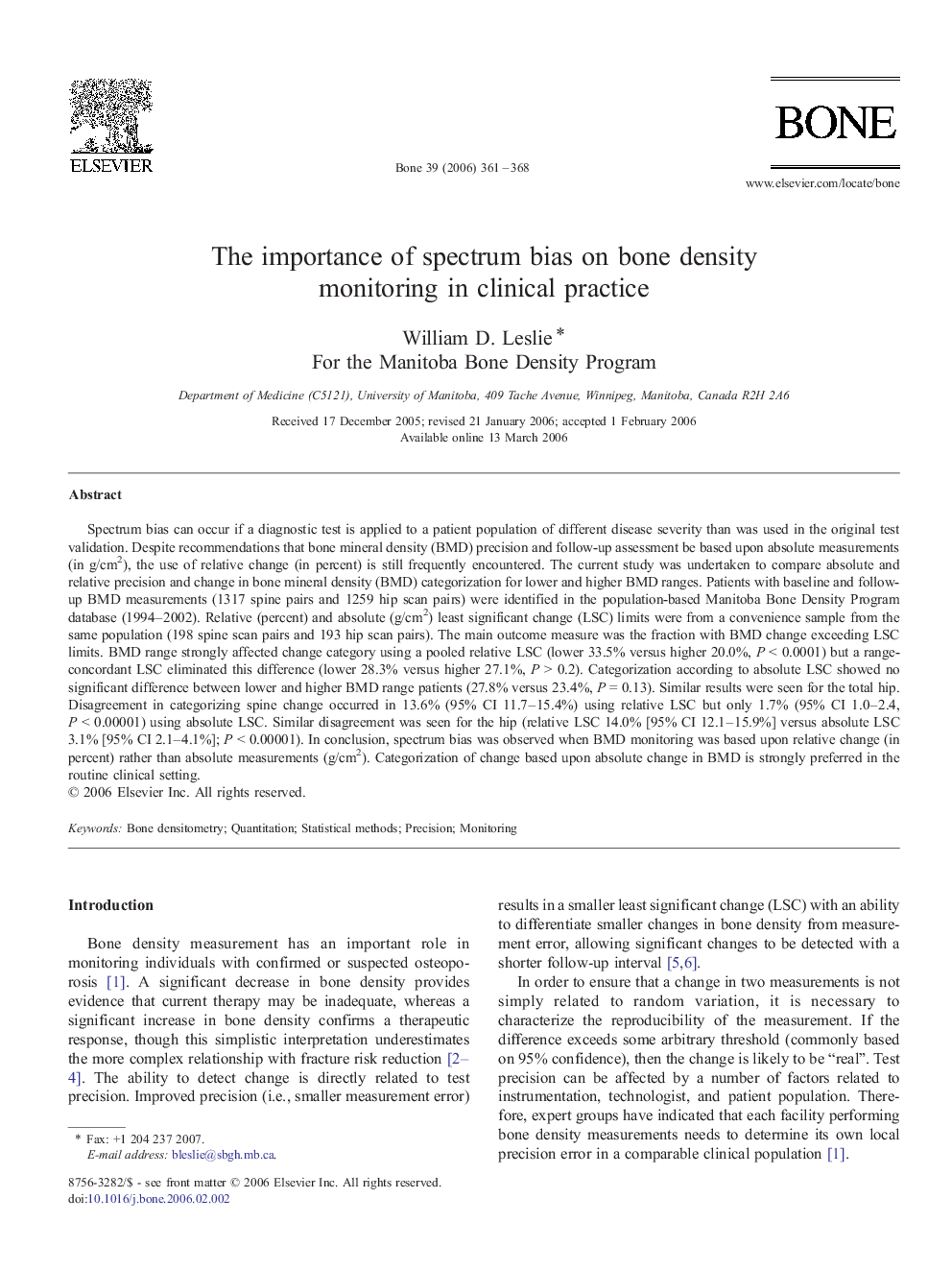| کد مقاله | کد نشریه | سال انتشار | مقاله انگلیسی | نسخه تمام متن |
|---|---|---|---|---|
| 2783139 | 1153378 | 2006 | 8 صفحه PDF | دانلود رایگان |

Spectrum bias can occur if a diagnostic test is applied to a patient population of different disease severity than was used in the original test validation. Despite recommendations that bone mineral density (BMD) precision and follow-up assessment be based upon absolute measurements (in g/cm2), the use of relative change (in percent) is still frequently encountered. The current study was undertaken to compare absolute and relative precision and change in bone mineral density (BMD) categorization for lower and higher BMD ranges. Patients with baseline and follow-up BMD measurements (1317 spine pairs and 1259 hip scan pairs) were identified in the population-based Manitoba Bone Density Program database (1994–2002). Relative (percent) and absolute (g/cm2) least significant change (LSC) limits were from a convenience sample from the same population (198 spine scan pairs and 193 hip scan pairs). The main outcome measure was the fraction with BMD change exceeding LSC limits. BMD range strongly affected change category using a pooled relative LSC (lower 33.5% versus higher 20.0%, P < 0.0001) but a range-concordant LSC eliminated this difference (lower 28.3% versus higher 27.1%, P > 0.2). Categorization according to absolute LSC showed no significant difference between lower and higher BMD range patients (27.8% versus 23.4%, P = 0.13). Similar results were seen for the total hip. Disagreement in categorizing spine change occurred in 13.6% (95% CI 11.7–15.4%) using relative LSC but only 1.7% (95% CI 1.0–2.4, P < 0.00001) using absolute LSC. Similar disagreement was seen for the hip (relative LSC 14.0% [95% CI 12.1–15.9%] versus absolute LSC 3.1% [95% CI 2.1–4.1%]; P < 0.00001). In conclusion, spectrum bias was observed when BMD monitoring was based upon relative change (in percent) rather than absolute measurements (g/cm2). Categorization of change based upon absolute change in BMD is strongly preferred in the routine clinical setting.
Journal: Bone - Volume 39, Issue 2, August 2006, Pages 361–368